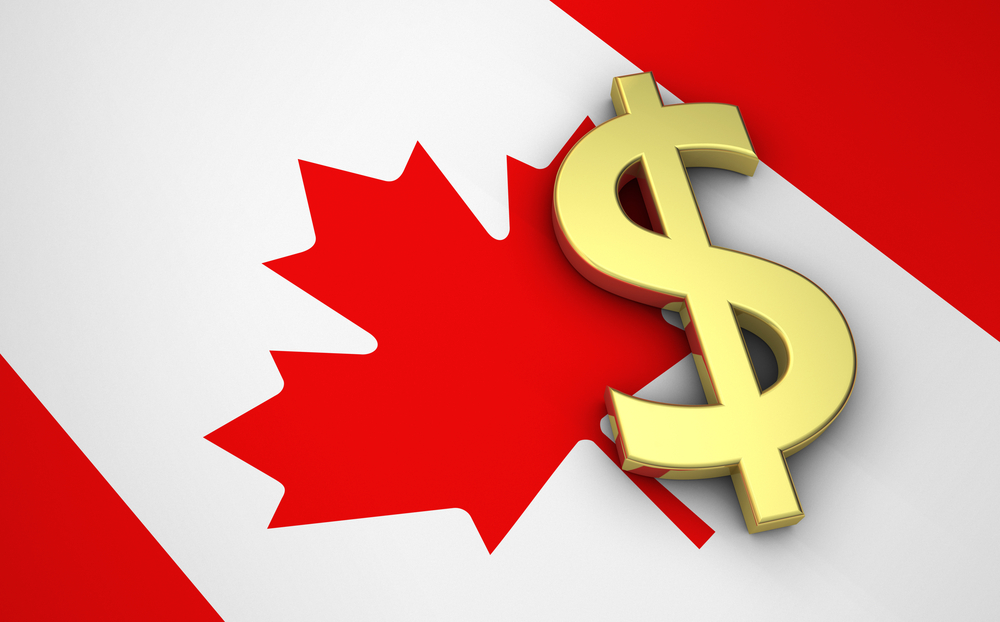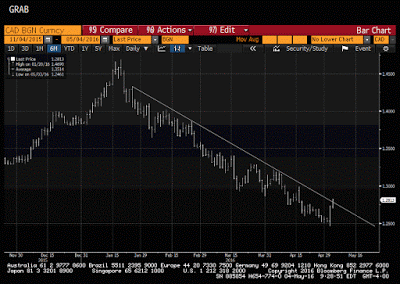How About That Loonie, eh?

Please note that we are not authorised to provide any investment advice. The content on this page is for information purposes only.
It has been painful trying to pick a bottom of the US dollar against the Canadian dollar. Now a 4-5 point downtrend from the secondary high in late-January is being violated today. It is found near CAD1.2785 today. Intraday penetration is one thing, but some models may take the signal on a closing basis only.
The US dollar recorded the multi-year high against the Canadian dollar on January 20 a little below CAD1.47. Since then the Canadian dollar has been the strongest of the majors, appreciating 13.3%, while the Japanese yen has risen 9.7%.
It has been painful trying to pick a bottom of the US dollar against the Canadian dollar. Now a 4-5 point downtrend from the secondary high in late-January is being violated today. It is found near CAD1.2785 today. Intraday penetration is one thing, but some models may take the signal on a closing basis only.
The US dollar recorded the multi-year high against the Canadian dollar on January 20 a little below CAD1.47. Since then the Canadian dollar has been the strongest of the majors, appreciating 13.3%, while the Japanese yen has risen 9.7%.
The rise in the Canadian dollar occurred as oil prices bottomed (January 20, though retested on February 11), US dollar weakened broadly as data disappointed, and the Fed signaled that it was in no hurry to hike rates again. In addition, the risk of a Bank of Canada rate cut diminished. The implied yield on the June 2016 BA futures fell 50 bp through the end of April. In recent sessions, the implied BA rate has eased, and at 94.5 bp is a 2 1/2 week low.
Earlier today, Canada reported a record large merchandise trade deficit of CAD13.4 bln for March. It was more than twice the median guesstimate in the Bloomberg survey, and the February deficit was revised higher. It might mean that February GDP, reported last week at -0.1% could be revised down and points to a significant headwind for March. Canada’s trade surplus with the US fell and at CAD1.53 bln, is the smallest since late 1993, as exports fell 6.3%. Overall, Canadian exports fell 4.8% to their lowest level in more than two years. Exports fell 6.6% in February.
It is important to recognize that the weakness in exports was not limited to the energy sector. Non-energy exports fell 4.8%. Energy exports fell 4.3%. In volume terms, exports fell 2.9%, while import volumes slipped 0.3%.
We note that yesterday the US dollar made a new low for the move near CAD1.2460 before recovering to close above the recent highs, in what technicians refer to as a (potential) key reversal. Technical indicators like the RSI and MACDs did not confirm the low, which regarded as a bearish divergence. The US dollar is flirting with a retracement target near CAD1.2820. The next target is CAD1.2930, with CAD1.30-CAD1.3045 being a key technical hurdle.
Great Graphic: CAD Takes out Trendline is republished with permission from Marc to Market





